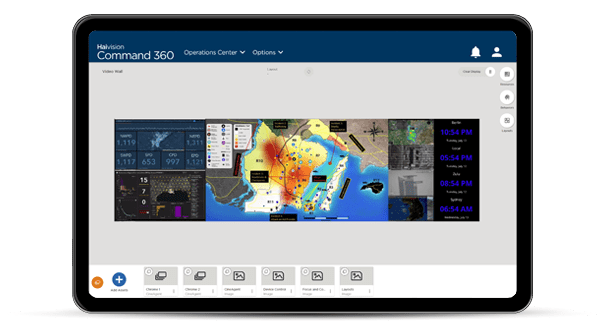Mission-critical environments typically operate 24/7/365 to focus on specialized operations. To avoid downtime or failures, it’s important that these environments incorporate technology that provides operational resilience. For example, a video wall system is the perfect solution for mission-critical operations that require visual collaboration and situational awareness. Components such as wall management software, processors, encoders, decoders, displays and more are a part of the technology ecosystem that keeps a visualization platform consistently up and running. System failure of any of these components can be problematic.
Resilience refers to the inherently designed ability to meet an acceptable level of service while a fault is present. The goal of redundancy is to prevent or recover from a system failure. This is accomplished by switching to backup components during a failure event to restore full operation.
Unforeseen circumstances are an unpredictable part of reality. However, assessing the operational resilience of a video wall system and maintaining redundancy is crucial to an organization’s long-term success. As you research video wall options, below are considerations to help ensure uninterrupted system functionality.
Redundant Components
Mission-critical control rooms and operation centers can’t risk downtime. A visualization system becomes operationally resilient by adding a redundant video processor as a backup. We think of ‘backup’ equipment as extra hardware on hand when the primary device crashes. Environments with large video walls can’t risk losing time by swapping out and configuring processors when a failure occurs. True redundancy enables the primary and backup processors to create mirrored displays. By mirroring content between two displays, users can alternate between them if one goes down.
Scalable Technology
Scalability is simply the ability of a system or its components to handle increased use or incorporate additional resources as an organization’s operation grows. It’s important that a system be able to accommodate future requirements such as additional video walls, expansion of content sources, and more. Scalability across functional, generational, heterogeneous, administrative, and geographic needs ensures optimal performance, security, and ease-of-use. Resilience is primarily the management of these additional resources. The scalability features provided by a network distributed video wall also allow for the resiliency features mentioned above.
Haivision MCS Solutions
Haivision provides multiple avenues to ensure operational resilience and redundancy through our visual technology. Our CineNet video wall management platform gives users automatic and manual backup capabilities. Since the system incorporates Alpha FX video processors, operators can create mirrored displays within CineNet to mitigate system failure. Our CineAgent, integrated with the CineNet interface, complements the system with an extra layer of redundancy if the Alpha FX processor becomes unavailable. Site Manager also creates a secure gateway to protect the system’s core processors against external threats which could result in costly downtime.
Contact us today for more insight on the built-in resilience and redundancy of Haivision visual collaboration solutions and how they can be tailored to fit your organizational needs.
